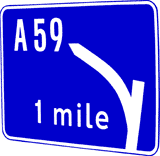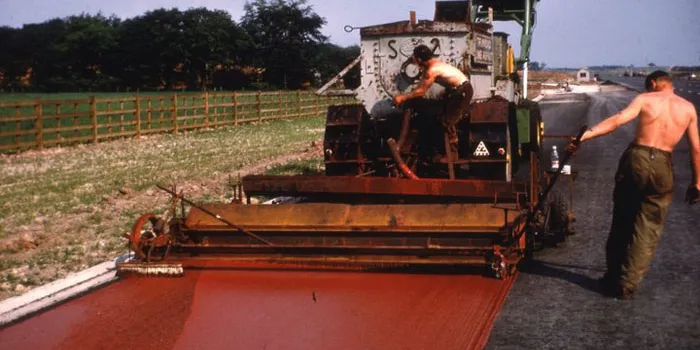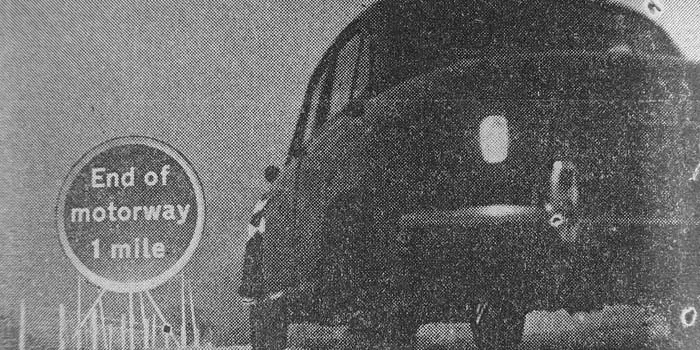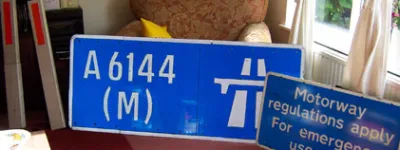
It wasn't long before Britain had much more than eight miles of motorway. A year later, in December 1959, the M1 (and its smaller siblings, M10 and M45) opened, and within another year you could drive the Maidstone Bypass, Lancaster Bypass, Stretford-Eccles Bypass and pretty much the entire M50.
The freshly repaired Preston Bypass was, however, the busiest of the lot. While stories of the M1 are of a deserted three-lane motorway used as a racetrack by drivers of sports cars, and of the M50 being the climax of a day-trip for motorists in Birmingham, the first bit of the M6 was under pressure from the very beginning. Summer season at Blackpool overloaded the road completely, with lengthy queues at each end of the motorway as traffic struggled to get back on the old road. Even in winter, in the months just after opening, police counted 4,600 vehicles an hour in each direction - or one every two seconds. That would be considered busy on a two-lane motorway even today.
One of the fastest lessons to be learned was that "reinforced" shoulders were not adequate and they needed to be hard to have any real benefit. Stories abounded of lorries overshooting the narrow reinforced part and getting stuck in the mud, or of jacks driving themselves into the ground instead of lifting up the car. By 1963 enough was enough, and the Ministry paid £310,000 to pave the shoulders just in time for the next section of M6 to connect up to it. Preston to Warrington opened in July 1963, bringing with it ever more traffic.
In 1965, the opening of the Preston-Lancaster section to the north was imminent, and the Preston Bypass was in danger of becoming a two-lane bottleneck on the busiest part of a three-lane M6. Ten years earlier James Drake had argued with the Ministry over the width of the motorway, adamant that his traffic forecasts required three lanes each way. His determination paid off when the broad central reservation, designed for future widening work, was put to use just seven years after the motorway opened. For the bargain price of £519,274, a third lane was added between Bamber Bridge and the former temporary bend at Broughton, which now became the UK's first three-level junction in order to connect with the motorway northward.
It still wasn't enough. As Lancashire's motorway network expanded through the 1960s, the Preston Bypass was at the centre and continued to struggle with traffic. To the south, the M61 connected at a new junction near Walton Brook. Six lanes of traffic had to merge together but rarely managed to do so without extensive traffic jams. To the north, Blackpool became an even more enticing destination with its own motorway connection from Broughton, the M55.
With the Preston Southern and Western Bypasses ruled out as too expensive, the fix was finally applied in the early 1990s when the Bypass was widened and rebuilt to provide four lanes between the M61 and M55. The work involved rebuilding virtually every overbridge and substantially remodelling the underpasses, and on the north side of the Ribble Valley, took the motorway on a new line to the east of the original.
Today, the Preston Bypass isn't really the same road as the one opened by Harold Macmillan back in December 1958 - to all practical purposes it's a new motorway opened in 1995 and the old one is gone. The one thing he would probably recognise are the traffic jams on Summer weekends. Ever the guinea-pig, half a century later the Preston Bypass is still trying to learn how to deal with far more traffic than it was ever meant to carry.
Picture credits
- Photograph of hard shoulder paving is courtesy of the Motorway Archive Trust.
- Photograph of car with 'end of motorway' sign appeared in the Manchester Guardian on 5 December 1958.


